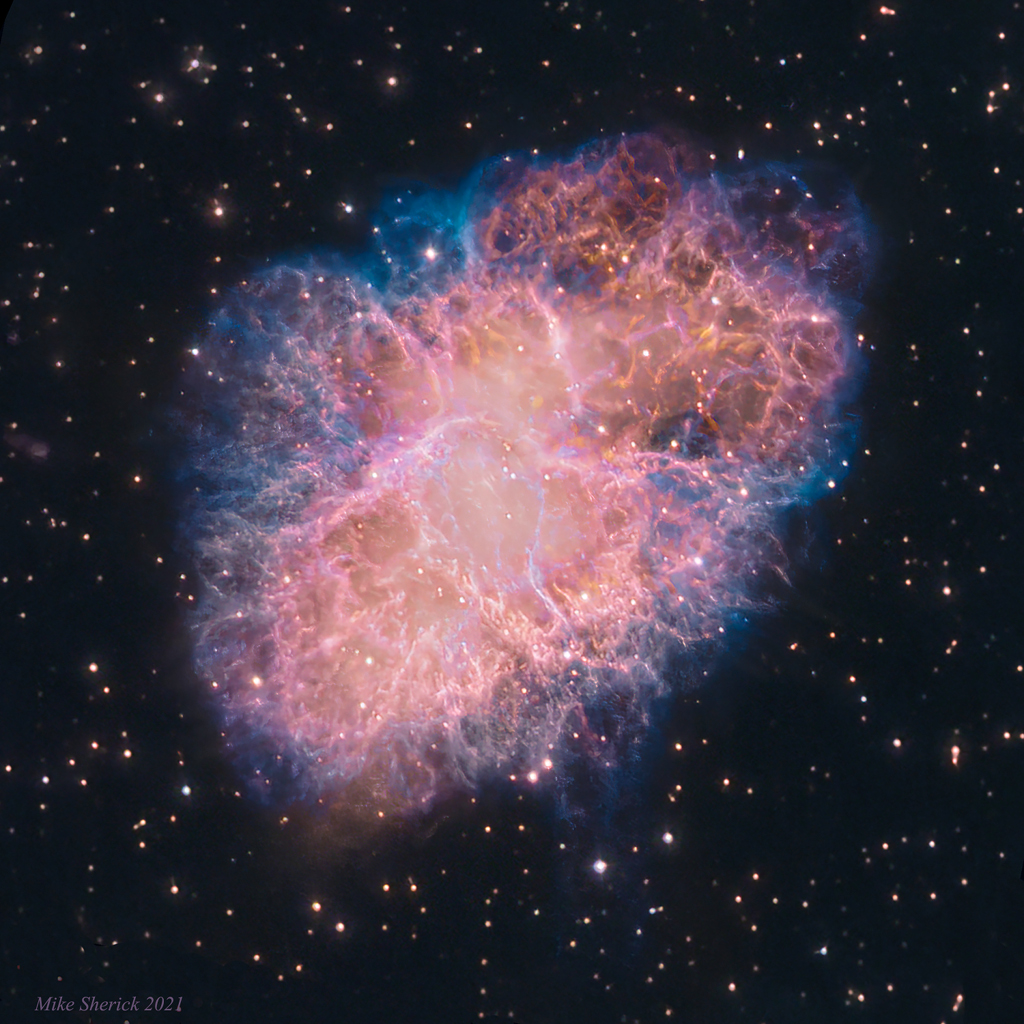
M1: The Crab Nebula
이미지 크레디트 및저작권 : Michael Sherick
설명: 게 성운은 샤를 메시 에( Charles Messier)의 유명한 18세기 혜성이 아닌 목록의 첫 번째 천체인 M1으로 분류됩니다 . 우리가 알고 오늘 게는 초신성 잔해는 , 그것은 거대한 별의 마지막 폭발의 파편으로 구성 천상의 전문가들에 의해 관찰 된 1054 년 .
이 선명한 지상 기반 망원경 보기는 광대역 색상 데이터와 이온화된 황, 수소 및 산소 원자의 방출을 보여주는 협대역 데이터를 결합하여 여전히 팽창하는 구름 에서 얽힌 섬유를 탐색합니다 .
게 펄서 는 축을 중심으로 초당 30회 회전하는 중성자별입니다. 그것은 현대 하늘 연구자들이 알고 있는 가장 이국적인 천체 중 하나이며 성운의 중심 근처에서 밝은 점으로 보입니다. 이 붕괴된 별핵의 잔해는 우주 발전기처럼 회전 하고 전자기 스펙트럼 전반에 걸쳐 게의 방출을 위한 에너지를 제공합니다. 게 성운은 크기가 약 12광년이고 황소자리 에서 약 6,500광년 떨어져 있습니다 .
M1: The Crab Nebula
Image Credit & Copyright: Michael Sherick
Explanation: The Crab Nebula is cataloged as M1, the first object on Charles Messier's famous 18th century list of things which are not comets. In fact, the Crab is now known to be a supernova remnant, debris from the death explosion of a massive star, witnessed by astronomers in the year 1054.
This sharp, ground-based telescopic view combines broadband color data with narrowband data that tracks emission from ionized sulfur, hydrogen, and oxygen atoms to explore the tangled filaments within the still expanding cloud.
One of the most exotic objects known to modern astronomers, the Crab Pulsar, a neutron star spinning 30 times a second, is visible as a bright spot near the nebula's center. Like a cosmic dynamo, this collapsed remnant of the stellar core powers the Crab's emission across the electromagnetic spectrum. Spanning about 12 light-years, the Crab Nebula is a mere 6,500 light-years away in the constellation Taurus.
댓글